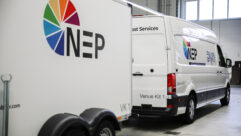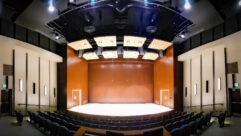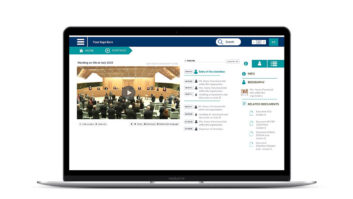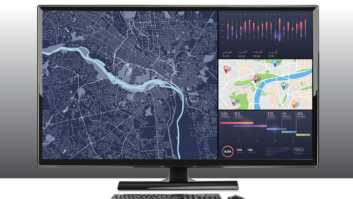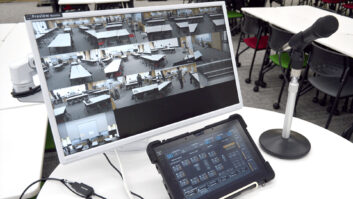Controlling the Room Environment
May 20, 1997 12:00 PM,
Bob Heil
Think about any theater, auditorium, arena or concert hall you have ever visited. As you enter, the lights are fairly bright, but when the music begins, those lights dim and the show begins. This is exactly what needs to be duplicated in a true home theater. How to accomplish that feat? Automation.
Automation is a necessary element in controlling a room environment. For true home theater, however, automation will make or break any home theater system, no matter what the investment costs have been.
Any large-screen television produces much better pictures in subdued or dimmed light. All lighting should be controllable from a handheld remote or from a small console mounted in or close to that easy chair or theater seat.
So automation is necessary in some situations and very useful in others. Why isn’t it being planned for all new homes? Partly because many think automation is only for the rich. Yet automation doesn’t have to be as intimidating as those show homes make it seem. It can be easily accomplished in existing or new homes without the addition of wire simply by using a unique technology called carrier current.
With carrier current technology, radio signals are transmitted from a handheld remote for about 100 feet (30.5 m) throughout the house. These signals can be received by plug-in modules anywhere in the household. The modules can handle the 110 V used to control lights, drapery motors, air conditioners, coffee makers or projection screens. Anything electrical can be controlled by simply plugging it into the module and in turn plugging that module into a nearby wall socket. Carrier current control systems can turn electrical devices on and off and provide dimming for lights.
With new construction, standard duplex outlets are now available with the receiver built-in so it becomes easy and cost effective to use these automated 110 V plugs throughout the house. Light switches are also available with the carrier current receiver built-in. The sockets and switches are available from X-10 or Leviton. An X-10 switch costs approximately $15.
Once the sockets and switches are in place, you will be able to install 24-hour clock timers ($24) and telephone interfaces ($80) that allow you to completely automate your home. With proper programming, you will seldom have to turn a light on or off again. The house will “know” when you arrive home and which lights should be turned on.
The telephone transponder is a terrific device. You can call home from any telephone. On the tenth ring, you dial the number 7 and turn off your curling iron in the bathroom. By calling and dialing the number 3, you can turn on the crockpot you loaded up before leaving for work.
A drape closure motor system available from Drape Boss can be controlled by one of the simple X-10 modules and from a timer. The system closes the west side drapes each day to keep out the sun that heats up the house. With Drape Boss and X-10, you will notice increased savings on energy bills during the hot summers.
These are just a few simple forms of basic automation. In talking to hundreds of dealers and thousands of consumers over the years, I find it very interesting that few people really understand automation. Most think only of those great “Home Of Tomorrow” articles in Popular Science and Popular Mechanics, or TV shows such as Lost In Space, Star Trek, The Twilight Zone and The Jetsons. Each of these included amazing Rube Goldberg devices that would one day not only get us out of bed and cook our breakfast, but turn on lights, vacuum the carpets and do most of the basic household chores, making our lives organized, blissful and secure.
In basic terms, automation is the control of monotonous, repetitive events by either time or situation. The reason automation is not more commonplace is that most people are simply not ready to turn their household over to a machine. Yes, we can do these daily chores with automation, but we don’t need to have every electrical device in the house controlled. There is a fine line between tasks you need to automate and those you do not.
We automate for four reasons:
* Convenience.
* Energy savings.
* Security.
* Comfort.
America has become a busy society, full of people on the run with cellular phone in hand and beeper in pocket. With a properly automated home, when you’re away, your home will provide complete protection from fire, burglary and other unexpected emergencies, such as flooding or frozen pipes. As family members return from work and school, a simple code will allow them to enter. Automated homes regulate the temperature, security and lighting with a simple touch of a button.
Home automation can be as simple as a single garage door opener. What is important is that any new home construction should have some form of planning for electronic control functions.
* Variable lighting control: Turns lights on or off and dims light to create different lighting atmospheres throughout.
* Appliance controls: Allow remote control and time scheduling of various appliances, such as fans, water pumps and swimming pool filters.
* Security system: Monitors your home with all of the advanced features of modern security systems.
* Climate control: Temperatures in rooms can be regulated according to time of day.
* Fire and smoke: Automatically indicates the room in which the fire or smoke is located and closes air vents to those areas.
* Personal emergencies: Calls your doctor, emergency services, relatives or others and delivers digital voice messages for help when needed.
* Access control, intercom and CCTV: Allows home access to the household staff, outside services or house guests at selected times without the owner needing to leave a key.
* Lawns, gardens, pools: Controls sprinklers, pool pumps, skimmers and regulation of hot tubs.
* Telephone system: Allows sophisticated telephone functions and provides a variety of message machine features, including call forwarding and voice mail.
* Entertainment: Controls TVs, VCRs and satellites with the same control used for your drapes, lights or heating.



